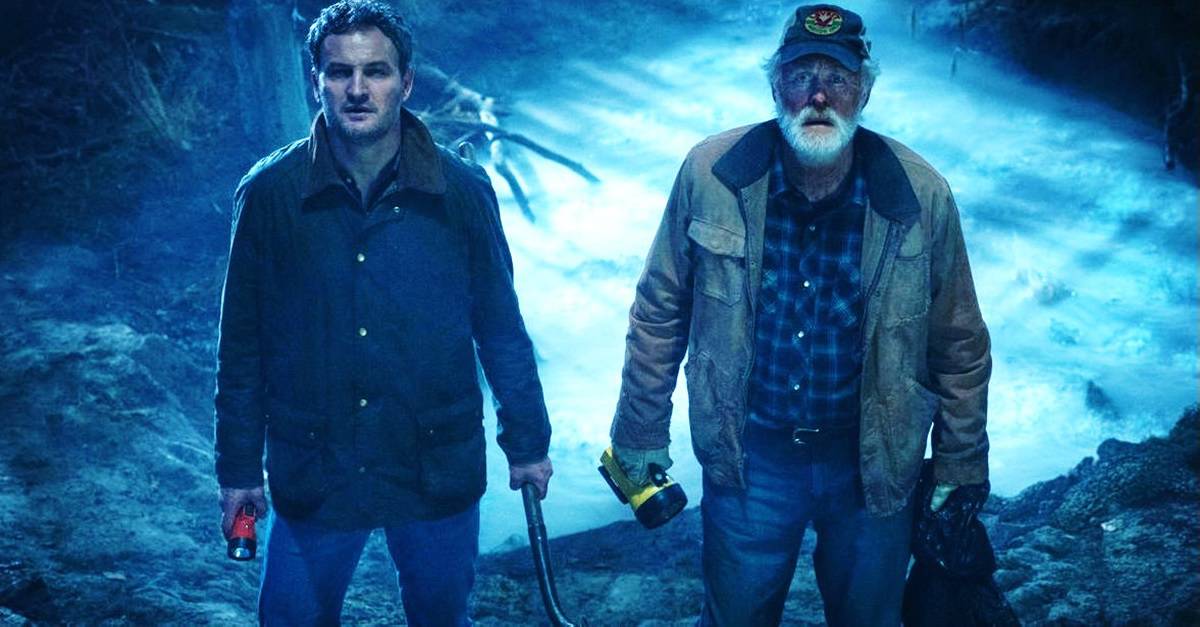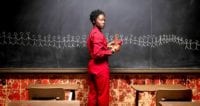In my last article leading up to the release of last weekend’s Pet Sematary, Kevin Kolsch and Dennis Widmyer (Starry Eyes) were poised to be at the center of a hotly debated film. Not only may they have to contend with the legion of fans of Stephen King’s 1983 source novel, but they also would have to possibly face the ire from fans of Mary Lambert’s original 1989 adaptation. It almost seems like a lose-lose situation from the directing duo. This is their first big Hollywood film, and if it goes a certain way, it could always be their last big Hollywood film. I caught the movie at the early screening Thursday night before it opened wide the next day and I am here to attest that sometimes remakes can be better.

Now, before you pull out your tomatoes and hurl them in my general direction, let me say a few things for the sake of clarity. I adore Mary Lambert’s 1989 film and even recently had the privilege of attending the 30th anniversary panel at Horrorhound with Denise Crosby (Rachel Creed), Miko Hughes (Gage Creed) and Brad Greenquist (Vicor Pascow). This is the film that introduced me to the world of Pet Sematary and then led me to dive further and read the novel some 25 years ago as a small kid. There are definitely things that Lambert and her team did that still go unrivaled. I think both Denise Crosby’s performance as Rachel Creed and Brad Greenquist’s role as Victor Pascow are ones for the ages. Who could ever top Miko Hughes’s Gage Creed, a damn fine performance he delivered when he was only three? A few years later he would terrify us all again as Dylan in Wes Craven’s New Nightmare—thankfully, Pet Sematary (2019) doesn’t even try.
I could go on about the 1989 version with both things I love and didn’t love but I’m here to tell you to give a remake a chance. Widmyer and Kolsch have directed a film that is a familiar yet entirely new experience. The characters in this Pet Sematary felt not only more grounded in reality, but their motivations were clearer. Purists will likely cringe at the biggest twist in the film, that pesky one spoiled in the trailers that Ellie, not Gage would be the Creed child to die. I can feel you clutching your pearls now by the way. Please, bear with me; there are reasons for this that even if you don’t like, hopefully you can at least come to appreciate and understand why the filmmakers made the change. The marketing team should still all be fired for putting that in the trailers, but that’s another rant for another day.

The most obvious reason for the child swap is it is simply more practical. Kolsch and Widmyer even have stated to the press that there is simply way more one can do with an 11 year old girl that presents logistical problems with a 3 year old boy; it also worked better for me on an emotional level. Ellie was their first child—and I’m not saying that means the elder Creeds loved her anymore then they loved little Gage. There was a significant age difference between the two ,however, and this Ellie had a completely different, more adult relationship with her parents.
There’s also the terrifying things the film does with Ellie after she comes back that just couldn’t be done in a (semi) practical way to the same effect. The last thing they wanted was to either have Jason Clarke (Louis Creed) fighting a doll that’s supposed to be his 3 year old son as a climax or an entire CGI creation leaving Jason Clarke fighting nothing while pretending to fight his undead child. The undead Ellie has so much personality; she’s funny, scary, and out to make mom, dad, and Gage join her and her already undead cat Church. There’s malevolence in her performance that just couldn’t be done using a 3 year old. It wasn’t there in the original and however your feelings on the switch, open your mind and just watch the movie—it works.
Jete Laurence (The Ranger) as Ellie Creed was such a much better written character to me in Jeff Buhler’s (The Midnight Meat Train, the Prodigy) script as a viewer; she felt like a real person to me. I think Ms. Laurence, between this and indie horror hit The Ranger, is a girl to look out for. Even at her age, she fleshed out what was one of the worst parts of the original Lambert adaptation. Earlier I mentioned that this film doesn’t try to duplicate things from the last adaptation and somehow outdo it; that’s exactly how I feel about this iteration of Ellie Creed. Gage is barely present in the film so there’s no need to compare. All the focus is on her and she’s an actual fleshed out believable human being this time around. When that truck comes barreling down the highway at her, I really cared.
The entire film echoes the way I feel about what the film does best, which is just tell this story in a different way than we’ve seen before. The outcome is the same but it doesn’t feel so “connect the dots” like the 1989 film does; I really think that all of the differences come down between the two screenplays. The 1989 adaptation was written by Mr. King himself. It is one of his better film adaptations of his own work, but I have never felt he was the best person at adapting himself for the screen. Jeff Buhler’s script focuses on the characters journey to a terrifying destination instead of using these characters as pawns to simply reach a terrifying conclusion—each jumping from plot point to plot point in an often rushed fashion.

Jason Clarke for me is also the definitive on-screen Louis Creed. Dale Midkiff was always the weakest leak for me in the original film; he was either always overacting or appeared to have eaten a bottle of Xanax just before Lambert cried action. None of this ever feels so melodramatic. The only reason Midkiff even works in the 1989 adaptation is the tone itself. He just has to be there and he doesn’t even do that very well; he’s out acted in a film he’s supposed to lead every step of the way. Clarke, however, gives a performance that is straight from Jack Nicholson in The Shining. It was truly a delight to see him transform from smug, quiet demure logical doctor and man of science to an insane madman diving head first into a supernatural world he does not—and cannot—understand.
It’s all in Jason Clarke’s eyes; there is something so terrifying watching him try to explain this all to his wife Rachel, this time played by Amy Seimetz (Upstream Color). The great thing about her performance in this movie is that Buhler’s script used the Zelda subplot in a way that the original film failed to do. This film actually incorporates her past trauma into Rachel Creed as a character and makes it central to what happens to her throughout the film. The practical effect work and the effectiveness of the Zelda scenes in the original again could never be duplicated, so Kolsch and Widmyer take it somewhere completely different. Zelda is something that is always haunting Rachel and all of her decisions, until eventually with aid of the supernatural elements set off in the story consume her in a way.
Fred Gwynne is another sacred cow from the original film and I always loved his interpretation of the Creed’s next door neighbor Jud. I still think it works for that film just fine, but after seeing the interpretation that was just brought to life by John Lithgow, I have to say he holds his own. It may not end up going down as an iconic performance like Gwynne’s, but Lithgow brings a foreboding secrecy and layers to this character. If anything, he’s underused as he was in the original adaptation, but the relationship that he develops with Ellie Creed only adds to the devastation and terror that follows when she returns from the grave.

The new film felt way more like an actual horror film to me and had a surrealistic vibe that led to the entire experience having a dreamlike quality. The characters in the way that they were written and their motivations felt more organic and natural. There is a gothic element to this film that certainly adds to the atmosphere that is sticky with dread; it worked for me in so many ways that the 1989 version didn’t. There were surprising elements in the visual flair that were reminiscent of Stanley Kubrick and Mario Bava. The sad thing is, it may be the type or project that people have made up their minds about before seeing—or not allowing what they’re saying to influence their thinking. I think both film adaptations are different experiences that have plenty to offer for horror fans, but this one actually takes the cake for me. I can’t believe I’m saying it, but sometimes remakes are better.


